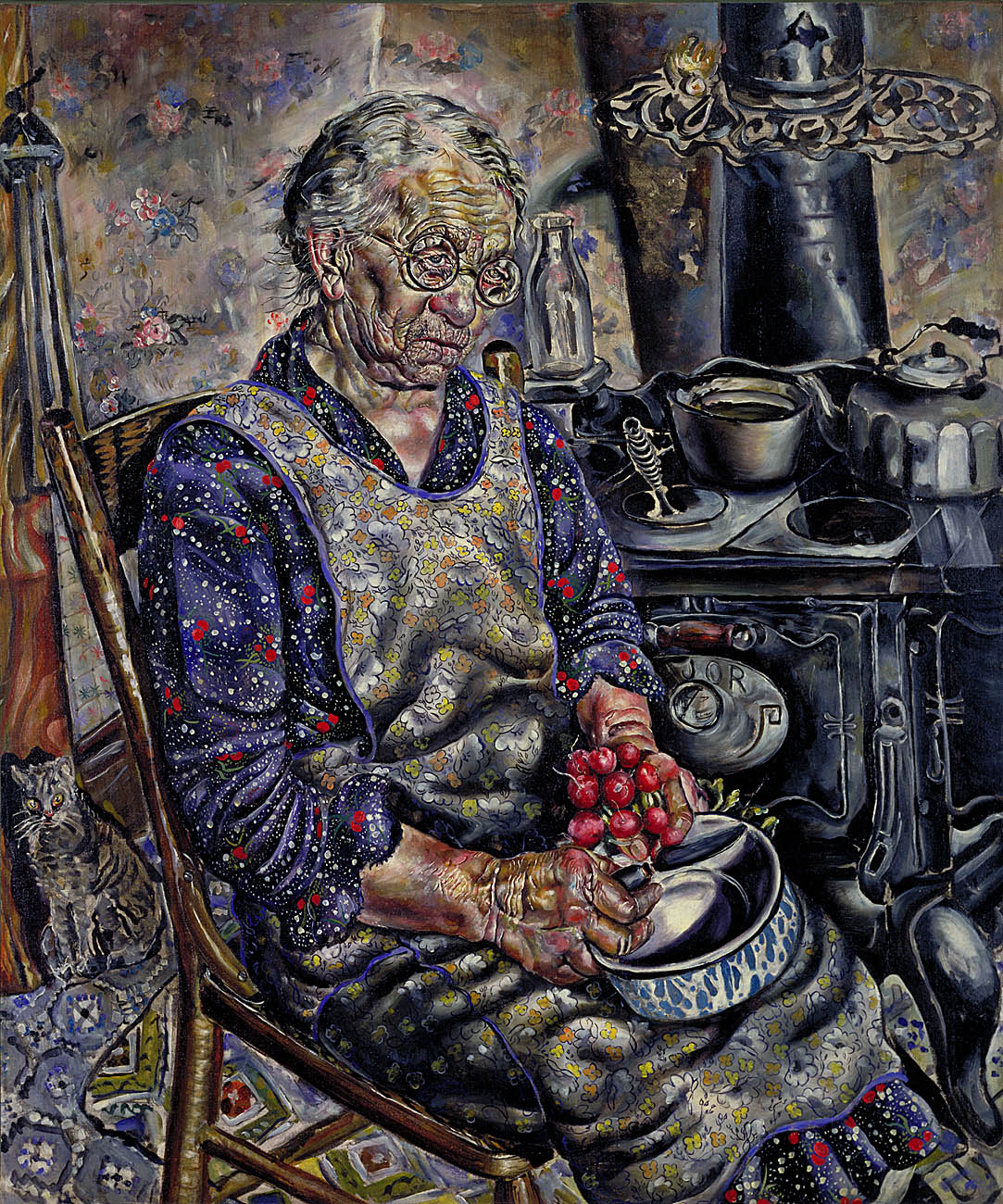The Farmer's Kitchen

Ivan Albright's obsessively detailed painting style put on canvas the crushing impact of drudgery and advancing age. The swollen, red-knuckled hands of this farmwife preparing to clean radishes, pushed forward until they are impossible to ignore, evoke an aching sympathy. The cast-iron stove has become a tool of torture this woman cannot avoid in her daily grind. Wrinkles multiply over her drooping flesh, speaking too eloquently of years full of ceaseless labor. The family cat offers this farm wife no companionship, but shrinks away from her. Outside in the fields must be a farmer husband equally worn by long labor. The burden of empathy for this hard life, made yet harder by the Depression, is almost unbearable.
Who is this poor farmwife, limp with weariness and lined with toil? One of Albright's neighbors in Warrenville, Illinois, posed for the painting. But no individual can explain the emotional freight of Albright's depiction. He aged and distorted every person he painted, young or old. Albright painted flesh that does not heal as living flesh does, but crumples and shows the scars of every event with equally cruel clarity.
1934: A New Deal for Artists exhibition label
"A painting should be a piece of philosophy---or why do it?" Interview with Paul Cummings, 1972, Ivan Albright Oral History, Archives of American Art, Smithsonian Institution
Ivan Albright painted The Farmer's Kitchen for the Public Works of Art Project during the 1930s. Albright remembered that the Depression didn't affect his life too much because people didn't buy his paintings "whether times were good or bad, [so] it didn't make a bit of difference" (Anthony, "Ivan Albright, A 'Legendary' Interview," Vermont Public Radio, 1978). He emphasized every fold in this lady's dress and every wrinkle in her face to create a surreal, nightmarish figure that is both repellent and sympathetic. Her tired eyes and red, swollen knuckles highlight the effects of aging and suggest she is struggling to complete the simplest of tasks. The distant gaze, sad expression, and drab colors evoke the hardships of the Depression, which Albright witnessed even if he did not experience them directly
- 3
- Other objects by this creator in this institution
- 1
- Objects by this creator in other institutions